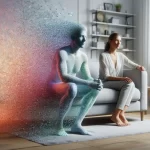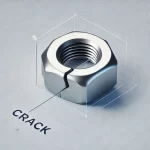The article “Dataset Augmentation with Synthetic Images Improves Semantic Segmentation” demonstrates how synthetic data can boost the performance of semantic segmentation models. However, it also highlights the limitations of non-photorealistic images generated in Blender. In this post, we’ll analyze the paper’s methodology and compare it with SynthVision’s hyper-realistic synthetic datasets, which overcome these limitations and open up new possibilities across industries.
Comparing Approaches: Article vs. SynthVision
| Aspect | Article (Blender + CRF) | SynthVision |
|---|---|---|
| Image Quality | Non-photorealistic, limited textures and lighting. | Hyper-realistic scenes with intricate textures and materials. |
| Control over Environment | Basic control using Blender, limited variety of backgrounds and lighting. | Comprehensive customization of objects, materials, lighting, and camera angles. |
| Scalability | 100 synthetic images per class, limited models. | Large-scale datasets tailored to customer needs across different sectors. |
| Annotation Quality | Uses CRF/GrabCut, prone to noisy edges. | Fully automated annotations with pixel-level precision. |
| Scenario Generation | Static backgrounds from the SUN Database. | Dynamic scenes: multiple objects and diverse lighting conditions. |
| Transferability to Real Data | Struggles with classes having high variability (e.g., people, animals). | Smooth transition from synthetic to real-world applications, improving generalization. |
Key Advantages of SynthVision’s Approach
- Photorealistic Renderings: Unlike the article, which works with simplistic Blender outputs, SynthVision’s hyper-realistic datasets better mimic real-world conditions, narrowing the domain gap.
- Enhanced Model Transferability: With richer visual cues (e.g., textures, lighting), models trained with SynthVision’s data generalize more effectively to real-world tasks, solving the challenges highlighted in the article.
- Flexible and Scalable Datasets: SynthVision’s datasets are not limited to predefined object classes; they cater to specific industries such as autonomous vehicles, agriculture, industry 4.0 and healthcare.
- Reduced Annotation Costs: Automatic, noise-free annotations eliminate the need for post-processing with tools like CRF, as discussed in the article.
A Future-Ready Solution for AI Development
The article showcases the power of dataset augmentation using synthetic data but also reveals weaknesses in image realism and dataset variety. SynthVision offers a solution to these problems with highly controlled, hyper-realistic synthetic data generation, reducing annotation costs while improving segmentation performance.
For AI developers and researchers, the combined use of real and hyper-realistic synthetic data represents the future. Whether working on semantic segmentation, object detection, or hyperspectral images, SynthVision’s datasets ensure reliable, scalable, and precise training data.
Conclusion
While the article presents a solid proof of concept, SynthVision takes dataset augmentation to the next level by addressing the core limitations of traditional synthetic data generation. By leveraging hyper-realism and precise control, SynthVision empowers companies and researchers to build more robust models and accelerate innovation in AI.






